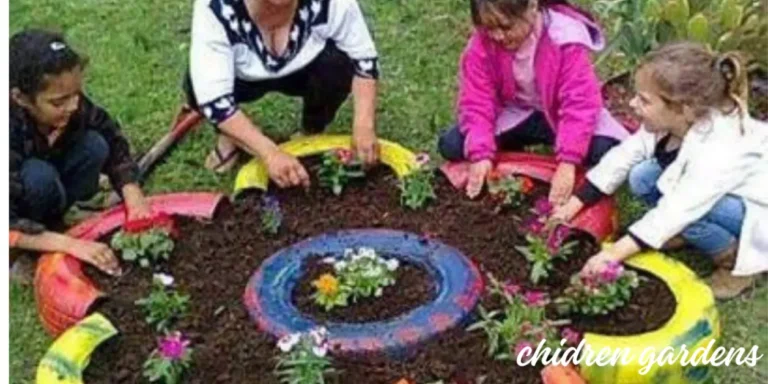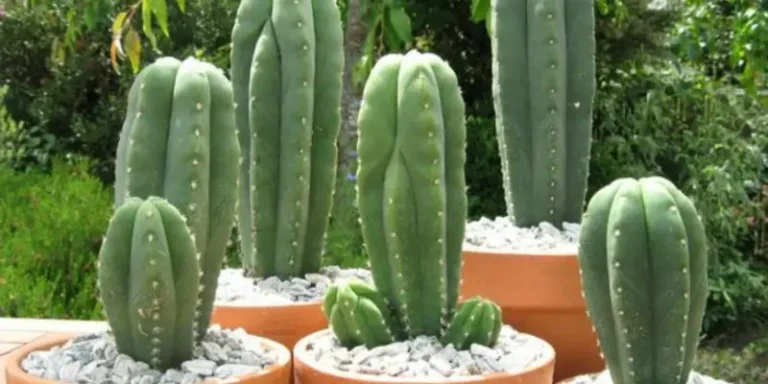Fruit You Can Grow Indoors
Fruit You Can Grow Indoors” is about growing fruit inside your home. You can produce many different fruits like lemons, strawberries, and blueberries. It’s an excellent way to have fresh fruit right in your house. Just make sure your plants get enough sunlight, use good soil, and give them the right amount of water. Also, remember to trim them and keep bugs away. With some care, you’ll enjoy tasty fruit from your indoor garden all year. Whether new to gardening or have a green thumb, indoor fruit growing is fun and rewarding!
1. Selecting the Right Fruits for Indoor Growth
Selecting suitable fruits for indoor growing is essential for a successful harvest. It is important to choose fruit varieties that are well-suited to indoor conditions and can flourish in environments with limited space and light. Below, we’ll explore some popular options that are known to thrive.
Citrus Fruits

Lemons, limes, and dwarf varieties of oranges and grapefruits are excellent choices for indoor growing. They require ample sunlight and well-draining soil.
Berries:

Strawberries, blueberries, and raspberries can be grown indoors in containers or hanging baskets. These fruits prefer acidic soil and regular watering.
Dwarf Varieties:

Look for dwarf or miniature fruit tree varieties such as dwarf apple, peach, or cherry trees. These compact trees are ideal for indoor spaces and can produce fruit in pots.
Fig Trees:

Fig trees are adaptable to indoor environments and can thrive in containers. Choose dwarf fig varieties for easier management.
Tropical Fruits:

If you have a warm, humid indoor environment, consider growing tropical fruits like bananas, pineapples, or papayas. These fruits require consistent warmth and moisture.
When selecting fruits for indoor cultivation, consider your available space, lighting conditions, and climate preferences to ensure the best chances of success.
3. Optimizing Indoor Growing Conditions: Light, Temperature, and Humidity
Creating the ideal growing conditions is essential for the success of your indoor fruit garden. Pay close attention to light, temperature, and humidity levels to ensure optimal plant growth and fruit production:
Light
Most fruit-bearing plants require ample sunlight to thrive and produce fruit. Place your indoor fruit garden near south-facing windows or use grow lights for sufficient light exposure. Rotate plants regularly to ensure even light distribution and prevent uneven growth.
Temperature
IIndoor fruit plants generally prefer temperatures similar to those of their outdoor counterparts. Aim for daytime temperatures between 65-75°F (18-24°C) and slightly cooler nights. Avoid placing plants near drafty windows or heating vents, as extreme temperature fluctuations can stress the plants.
Humidity
Many fruit plants, especially tropical varieties, thrive in high-humidity environments. To increase humidity levels, place trays filled with water and pebbles near your plants or use a room humidifier. Regularly growing your plants can also help maintain adequate humidity levels, especially during dry winters.
Air Circulation
Good air circulation is essential for preventing fungal diseases and promoting healthy growth. Use fans to gently circulate air around your indoor fruit garden, ensuring proper ventilation without causing excessive drafts.
4. Potting and Soil Considerations for Indoor Fruit Plants
Selecting the right potting mix and ensuring proper potting techniques are crucial for the health and growth of your indoor fruit plants. Here are some considerations:
Pot Size: Choose pots or containers that provide ample space for root growth while preventing overcrowding. Avoid overly large containers, which can retain excess moisture and lead to root rot. Opt for pots with drainage holes to allow excess water to escape freely.
Potting Mix: Use a well-draining potting mix formulated explicitly for fruit-bearing plants. Avoid using garden soil, which may contain pests, diseases, or weed seeds. A high-quality potting mix ensures proper aeration, drainage, and nutrient availability for healthy root development.
Soil pH: Test the pH of your potting mix and adjust it if necessary to meet the specific needs of your fruit plants. Most fruit-bearing plants prefer slightly acidic soil with a pH range of 6.0-6.5. Incorporating organic matter such as compost or peat moss can help acidify the soil if needed.
Mulching: Consider adding a layer of organic mulch, such as straw, wood chips, or shredded leaves, to the surface of the potting mix. Mulching helps retain moisture and suppresses weed growth.
5. Watering, Feeding, and Maintenance Tips for Healthy Indoor Fruit Growth
Proper watering, feeding, and maintenance practices are essential for ensuring the health and vitality of your indoor fruit plants. Here are some tips to keep your plants thriving:
Watering
Control the moisture levels of your potting mix regularly and water your indoor fruit plants. “When the top inch of soil feels dry, it’s time to water. Use room-temperature water and avoid overwatering, as soggy soil can lead to root rot. Ficus watering arrangement is based on weather conditions such as temperature and humidity.
Feeding: Regular fertilization supplies essential nutrients for healthy growth and fruit production. Give a balanced fertilizer for fruit-bearing plants and follow the manufacturer’s application rates and frequency recommendations. Avoid over-fertilizing, as it can cause nutrient imbalances and damage the plants.
Pruning
Prune your indoor fruit plants regularly to remove dead or diseased foliage, promote air circulation, and maintain the desired shape and size. Use sharp pruning shears to make clean cuts and avoid injuring the plants. Pruning also encourages new growth and can increase fruit yields.
Pest and Disease Management
Monitor your indoor fruit plants for signs of pests such as aphids, mites, and scale insects and common diseases like powdery mildew or leaf spot. Utilize natural pest management approaches like neem oil for organic control of pests, insecticidal soap, or beneficial insects to manage pest infestations.
Support Structures
Cages support your plants as they grow and develop, ensuring they stay upright and healthy throughout the season. For fruit plants that require additional support as they grow, proper support prevents breakage and ensures that fruit-bearing branches are adequately supported.
6. Common Challenges and Solutions in Indoor Fruit Gardening
While indoor fruit gardening can be rewarding, it also comes with its own set of challenges. Here are some common issues you may encounter and their solutions:
Lack of Sunlight
Inadequate sunlight can hinder fruit production and overall plant growth. Ensure your indoor fruit plants receive sufficient light by placing them near south-facing windows or supplementing them with grow lights.
Pest Infestations
Indoor environments can still be susceptible to pests such as aphids, spider mites, or mealybugs. Regularly inspect your plants for signs of pests and treat infestations promptly with organic pest control methods.
Overwatering or Underwatering:
Finding the right balance of watering can be challenging. Avoid overwatering by allowing the top inch of soil to dry out between waterings, and ensure proper drainage to prevent waterlogged roots. Conversely, be mindful not to water your plants, especially during hot and dry periods.
Temperature Fluctuations
Indoor environments may experience fluctuations in temperature, especially near windows or heating vents. Protect your plants from extreme temperature changes by placing them away from drafty areas and maintaining consistent room temperatures.
Nutrient Deficiencies
If not properly fertilized, indoor fruit plants may experience nutrient deficiencies. Monitor plant growth and leaf color for signs of nutrient deficiencies and adjust fertilization accordingly. Use a balanced fertilizer formulated for fruit-bearing plants to ensure all essential nutrients are provided.
Root-bound Plants Over time, indoor fruit plants may become root-bound if not repotted regularly. Check the roots periodically and repot your plants into larger containers as needed to allow for continued root growth and healthy development.
7. Harvesting and Enjoying the Fruits of Your Indoor Garden
Harvesting the fruits of your indoor garden is a rewarding culmination of your efforts. Here’s how to enjoy the fruits of your labor:
Timing
Harvest fruits when they are ripe and ready for consumption. Refer to specific fruit varieties for guidance on ripeness indicators such as color, texture, and aroma.
Gentle Handling
Handle harvested fruits with care to avoid bruising or damage. Use sharp scissors or pruners to carefully remove fruits from the plants without causing injury.
Storage
Store harvested fruits in a cool, dry place away from direct sunlight. Some fruits may require refrigeration to prolong freshness, while others can be stored at room temperature.
Enjoyment
Incorporate your freshly harvested fruits into your meals, snacks, or beverages for a delicious and nutritious treat. Whether eaten fresh, juiced, or used in recipes, homegrown fruits from your indoor garden offer unparalleled flavor and satisfaction.
Sharing
Share the bounty of your indoor garden with friends, family, or neighbors. Sharing your homegrown fruits not only fosters community but also spreads the joy of gardening and healthy eating.
Continued Care
After harvesting, continue to care for your indoor fruit plants by providing regular watering, fertilization, and maintenance. Proper care ensures continued fruit production and the longevity of your indoor garden.
Conclusion
In summary, “Growing Fruit Indoors” presents a fulfilling and convenient approach to incorporating gardening into your indoor space. Whether you’re short on outdoor areas or prefer the accessibility of homegrown produce, indoor fruit growing offers numerous benefits. You can enjoy a continuous harvest of flavorful fruits year-round with careful selection, attentive care, and nurturing. The choices are abundant, from zesty citrus varieties to luscious berries, promising delightful rewards.
FAQs
What is the easiest fruit to grow indoors?
The easiest fruit to grow indoors is typically the dwarf citrus tree, such as a lemon or lime tree. These trees thrive in containers, require minimal care, and produce fruit reliably when provided with adequate sunlight and water.
What fruit grows inside?
Several fruits can be successfully grown indoors, including citrus fruits like lemons, limes, and oranges, as well as berries such as strawberries, blueberries, and raspberries. These fruits thrive in indoor environments when provided with proper care and conditions.
Which fruit is best to grow at home?
Tomatoes, strawberries, herbs like basil and mint, and dwarf citrus trees like lemons or limes are among the best fruits to grow at home due to their ease of cultivation and suitability for small spaces.
What is the quickest fruit to grow?
The quickest fruit to grow is typically strawberries. They can start producing fruit within a few months of planting, making them a fast and rewarding option for home gardeners.
Can I grow apples indoors?
Yes, certain varieties of dwarf apple trees can be grown indoors with proper care.






